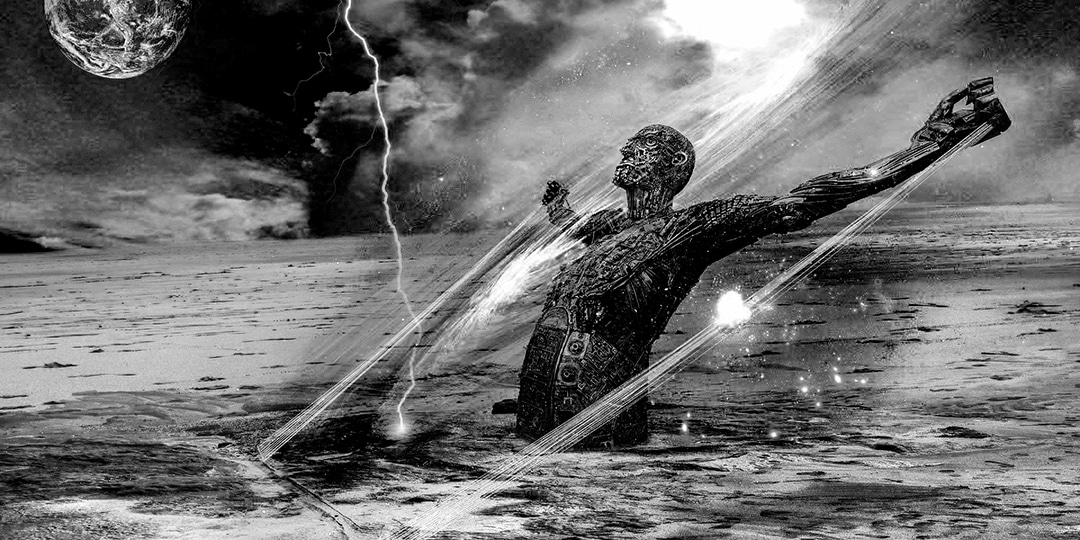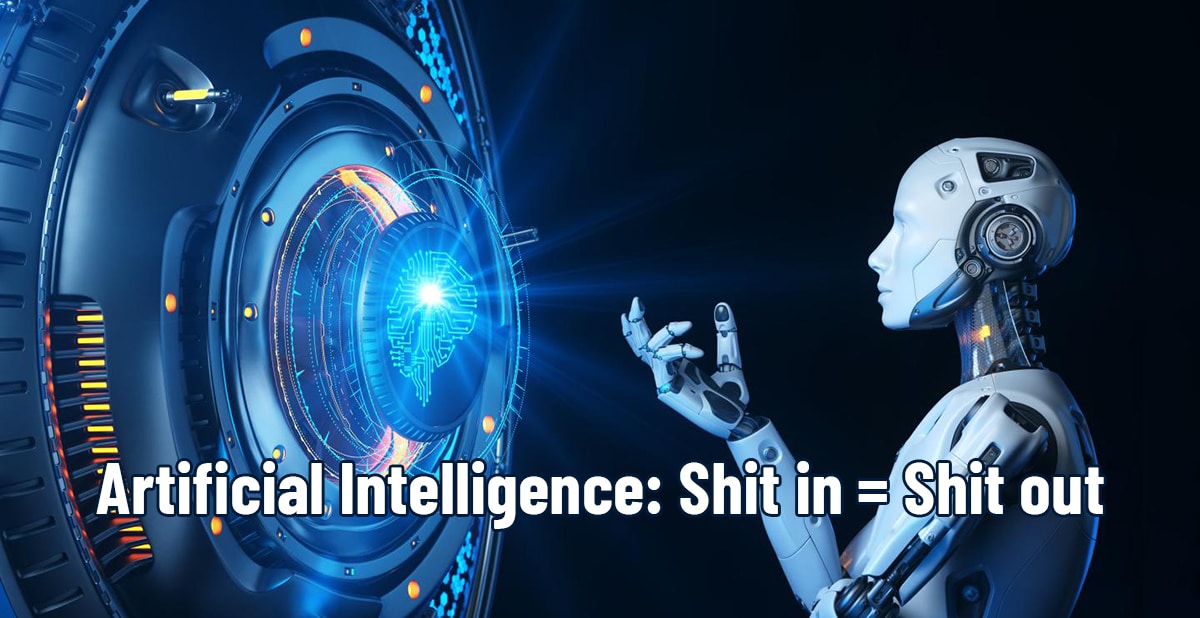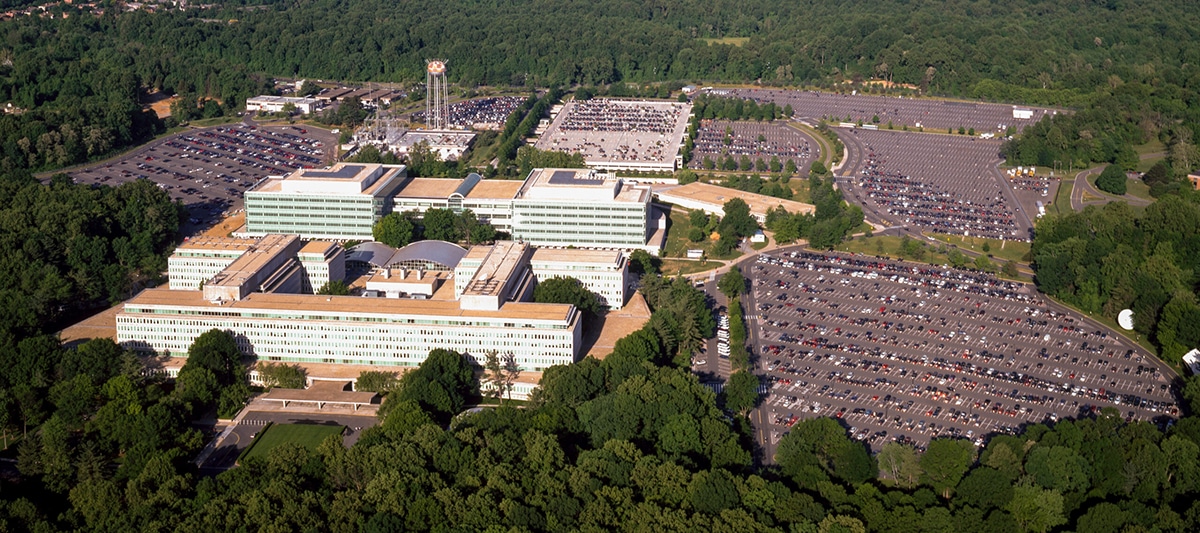
Conjuring the Demon: Artificial Intelligence, Descartes and the Brain-Consciousness Connection
by | May 15, 2022
After his interview at MIT’s Centennial Symposium in 2014, technocrat-extraordinaire Elon Musk opened himself up to the audience for questions. One audience member asked for his thoughts on Artificial Intelligence, and that’s when Musk’s expression changed. He suddenly became very serious.
I think we should be very careful about artificial intelligence. If I were to guess like what our biggest existential threat is, it’s probably that. So we need to be very careful with the artificial intelligence. There should be some regulatory oversight maybe at the national and international level, just to make sure that we don’t do something very foolish.
Musk then went on to warn us about AI, using some notably esoteric language to describe what he believes to be “our greatest existential threat”:
With artificial intelligence we are summoning the demon. In all those stories where there’s the guy with the pentagram and the holy water, it’s like, ‘Yeah, he’s sure he can control the demon.’ Doesn’t work out.
Most people interpreted Musk’s words as a simple analogy to describe the possible dangers surrounding the creation of an advanced AI, but perhaps his choice of words deserve more careful scrutiny.
In fact, that is what this essay is about, for, I believe that Musk chose his words very carefully. In other words, he might be right in the sense that you can’t “create” (artificial) intelligence but you can “summon” it.
Artificial Intelligence vs Conscious Computers
“Artificial Intelligence” (AI) has become a popular buzzword these days, so first I want to distinguish between what’s often referred to as “AI” and the concept of a conscious computer.
“AI” is often used interchangeable with the term “machine learning” to denote a computer system that has the ability to “learn” how to perform certain tasks with extreme accuracy, far exceeding what a human could do.
These systems are based on complex algorithms that ingest large amounts of “training data”, and as this training data is fed into the system, it self-updates its internal hyperparameters to evolve greater and greater levels of predictive accuracy. In other words, the system optimises towards a specific outcome/goal.
One of the most popular machine learning models (especially for image analysis) is called an “Artificial Neural Network” (ANN). Don’t let the name impress you too much because although some people claim that ANNs attempt to replicate the functioning of the human brain, this isn’t exactly correct.
These models are called “artificial neural networks” because they consist of multiple interconnected nodes, arranged in layers (similar to how the brain consists of billions of interconnected neurons). A data point is fed into the model and once it has been propagated through the network, a certain result is outputted. Then, through a process called “backpropagation”, the ANN adjusts its weightings in order to achieve a better result the next time round. This process is repeated until the neural net has “learned” to output extremely accurate results.
Again, despite the name, ANNs are actually quite simple. In fact, using an open source software library (like Python’s Scikit or R), you can write your very own ANN in less than 10 lines of code! Technically, anyone has access to this technology, although the most powerful models are proprietary and far more complex than what most people could create. A good example of this is Google’s chess playing neural net called “AlphaZero” which can wipe the floor with any grandmaster.
The point I’m trying to make here is that despite being labelled “artificial intelligences”, most of these systems are just clever algorithms (i.e., they don’t possess actual intelligence, although they are incredibly complex).
Here’s where the confusion lies, for, when most people think of “Artificial Intelligence”, they are picturing a conscious computer. In other words, a computer that has both awareness and the ability to make decisions. But is such a thing even possible to create? Can we really build a computer so advanced that it becomes conscious of itself, just like we are?
The transhumanists say yes. And they may be right. But maybe not for the reasons they think.
In order to explore this idea further, we need to revolutionize our understanding of consciousness and where it comes from – a problem that still eludes the world’s greatest neuroscientists, psychologists and biologists.
Is Consciousness Really Created by the Brain?
When scientists talk about AI they assume that the “intelligent” aspect is something they will be able to “engineer” using hardware and computer code. In fact, one of the doctrines of materialist science is that minds are confined to brains; in other words, most scientists believe that consciousness is a product of neuronal activity occurring in the brain. They then carry this assumption over to AI, believing that if they can engineer a system as complex as the brain, they too can “create” consciousness.
Therefore, the primary assumption fueling their efforts to build a conscious computer is that matter is primary and consciousness is secondary. They think that because we can engineer matter, we must be able to engineer consciousness, too.
But is that really true?
Francis Crick, the famous biologist who is credited with helping to decipher the helical structure of the DNA molecule, certainly thought so.
“You,” your joys and your sorrows, your memories and your ambitions, your sense of personal identity and free will, are in fact no more than the behavior of a vast assembly of nerve cells and their associated molecules… This hypothesis is so alien to the ideas of most people alive today that it can truly be called astonishing.”
However, this assumption (that the brain creates consciousness) stands in stark contrast to the teachings of nearly all of the spiritual and philosophical traditions that have shaped our world. According to these traditions, consciousness isn’t in the brain, the brain is in consciousness; the mind isn’t in the world, the world is in the mind.
Indeed, prevailing scientific thought has not always been based on materialism. Although mechanistic science can be traced back to the seventeenth century, the founders of this science did not subscribe to the idea that minds are confined to brains; they distinguished between the mechanistic body and, what they contended was a disembodied (or, to use a more scientific term, “non-local”) and immortal mind.
Rupert Sheldrake, an accomplished biologist and researcher, sums this up well in his illuminating book, Science Set Free:
Scientific orthodoxy has not always been materialist. The founders of mechanistic science in the seventeenth century were dualistic Christians. They downgraded matter, making it totally inanimate and mechanical, and at the same time upgraded human minds, making them completely divergent from unconscious matter. By creating an unbridgeable gulf between the two, they thought they were strengthening the argument for the human soul and its immortality, as well as increasing the separation between humans and other animals. This mechanistic dualism is often called Cartesian dualism, after Descartes (Des Cartes). It saw the human mind as essentially immaterial and disembodied, and bodies as machines made of unconscious matter.
We shall return to Descartes and his philosophy soon, but first it’s worth exploring the idea that minds are confined to brains from a more scientific perspective.
Research shows that children below the age of 10 or 11 don’t share the belief that the mind is confined to the brain; they believe that it extends into the world around them. As Sheldrake notes, perhaps this is because, at this age, children have not yet been conditioned to adopt the “correct” view: that thoughts and ideas are situated in the head.
The interesting thing about the “minds confined to brains” theory is that, despite being the dominant scientific explanation for consciousness, there is very little, if any, evidence to support it.
Where is the extraordinary evidence for the materialist claim that the mind is nothing but the activity of the brain? There is very little.
On the other hand, the idea of minds being “non-local”, i.e., not produced by the brain and not attached to the body, is more in line with our actual experience. Sheldrake put it this way:
No one has ever seen a thought or image inside someone else’s brain, or inside his or her own. When we look around us, the images of the things we see are outside us, not in our heads. Our experiences of our bodies are in our bodies. The feelings in my fingers are in my fingers, not in my head. Direct experience offers no support for the extraordinary claim that all experiences are inside brains. Direct experience is not irrelevant to the nature of consciousness: it is consciousness.
Sheldrake proposes a field theory of the mind – that the mind is made up of fields, which both remain inside the brain and extend beyond it. This theory seems more plausible than that of the materialist view point. And, interestingly, not only is there evidence to suggest that minds extend outward in space, there is also evidence to suggest that minds extend outward in time.
After all, at a fundamental level, we are all connected to the past through our memories and connected to the future by our desires, hopes and dreams. Where do such desires, hopes and dreams reside? As material traces within our heads? The more you think about it, the more ridiculous it seems.
Furthermore, quantum theory describes the behaviour of particles as probability distributions, modelled by the wave equation. The wave equation itself, however, is not material, it is a mathematical abstraction that describes a range of possible outcomes. And as Heisenberg’s uncertainty principle teaches us, the nature of reality is not solid, fixed and determinable as materialism implies. Rather, it is uncertain and, to a certain extent, “malleable”.
Indeed, the “non-local” theory of the mind is given further credence by the research of Dr William Tiller, which demonstrates how human intention may affect the physical properties of materials. Tiller proposes that there are two levels of physical reality, not just the one which we experience through our 5 senses. The second level, he maintains, is of a “magnetic information-wave” nature that inhabits the space in between the fundamental electrical particles that make up our normal atoms and molecules.
Tiller contends that we can induce a coupling effects between these two physical realities and that is how our minds can interface with the external world and affect changes in the properties of physical objects (changes that his and others’ experiments have measured).
We may also consider the experiments in remote viewing carried out by the American government during the 1970s, in which psychic candidates were shown to be able to correctly perceive specific locations separated from themselves in both space and time. If minds were confined to brains, this would most certainly be impossible.
According to Sheldrake’s hypothesis, minds are extended in time because they are self-organizing systems, shaped by “morphic resonance”. Sheldrake’s theory of “morphic resonance” says that all self-organizing systems (such as protein molecules, bacteria cells and human embryos) are influenced by memory from previous similar systems, and this memory is drawn toward attractors through chreodes.
Minds are closely connected to fields that extend beyond brains in space, and also extend beyond brains in time, linked to the past by morphic resonance and to virtual futures through attractors.
Now, let us leave the science behind for a moment and turn our attention to the philosophy of Descartes and the mysticism of the East, for, they both tell us the same thing – that the mind exists independently from the brain.
“I Think, Therefore I am” – Descartes and the Immortality of the Soul
In Rene Descartes’ philosophical masterpiece, Meditations on First Philosophy, “The Meditator” realises that all his existing knowledge, having been derived from sense perceptions, is unreliable: it must be demolished and rebuilt again from the ground up. (Indeed, Descartes recognised the withdrawal of the mind from the senses to be a necessary step on the road to truth).
The Meditator, having discarded all of his previous opinions and beliefs, slips and stumbles in search of solid ground on which to build a new understanding. Eventually, he finds a stable foothold in the discovery of his own existence: this, traditionally known as the “Cogito”, is the first principle of Rene Descartes’ philosophy, i.e., “I think, therefore I am”; or “I am thinking, therefore I exist”.
Here, The Meditator proves his own existence through direct intuition of the proposition “I am, I exist” being necessarily true, whether uttered out loud or conceived in the mind. The Meditator, through his thinking, has gained knowledge of himself and his nature. After comparing what he now knows about himself with his former beliefs about himself, he discovers that thought is all he is left with that cannot be separated from him.
He can say, then, that he knows himself to be nothing other than a thinking thing; in other words, a mind or “soul”. This knowledge of himself and his nature comes purely from his thinking and not from sense experience, i.e., not from the body, which for all he knows may be illusory.
The Meditator’s discovery of his own existence leads him to formulate a rule: Whatever he clearly and distinctly perceives must be true. He also knows that whatever he clearly and distinctly understands can be produced by God as he understands it. Therefore, if he can clearly and distinctly understand one thing without another, they must be distinct from one another.
Since The Meditator knows his existence purely from thought, he knows himself purely as a thinking thing, and therefore, he must be distinct from the body and capable of existing without it.
This, although drastically simplified, is Descartes’ proof for the existence of the mind or “soul” as a disembodied, immortal entity, capable of surviving after death.
For even if all its accidents were to change, for instance, if it understood, or wished, or perceived via the senses a different set of things, it would still be the same mind. On the other hand, the human body becomes something different from the very fact that the shape of some of its parts is changed. From this it follows that the body can very easily perish, but that the mind is of its nature immortal.
Rene Descartes, Meditations on First Philosophy.
Now, however, I know [scio] for certain that I exist; and that, at the same time, it could be the case that all these images, and in general everything that pertains to the nature of body, are nothing but illusions.
Rene Descartes, Meditations on First Philosophy.
Descartes did not need an electron microscope, a large hadron collider or CT scanner to “prove” that the mind exists independently from the body. He used mere philosophical reasoning to argue his case and, evidently, he did so rather convincingly (otherwise, philosophers would not still be debating his discoveries some 400 years after the publishing of his treatise!).
Interestingly, Descartes also speculated that the interaction of the mind with the machinery of the body takes place in the pineal gland, the small cone-shaped organ near the center of the brain (often referred to as the “third eye”).
Descartes’ philosophy is certainly not the only one that argues for a distinction between body and mind (between brain and consciousness). Indeed, there are a wealth of traditions that recognise consciousness, not as something produced by the brain, but as an independent phenomenon, emanating from a nonphysical dimension.
Many Hindu sages, Ramana Maharshi included, taught that the world around us is nothing more than an illusion (“Maya”), residing wholly within the mind. In fact, this concept stems from an ancient Hindu doctrine knows as “drishti-srishti” which says that the world comes into existence as a consequence of the “I” thought.
However, unlike Descartes and the other proponents of “Cartesian dualism”, who viewed the body as a machine, in the Yogic system, the body is not mechanistic, rather, it is the gateway for an invisible force, the “prana” or “cosmic energy” that heals and sustains all life.
Here’s how Paramahansa Yogananda briefly explains the interaction of body and mind in his famous book, Autobiography of a Yogi:
Man’s body battery is not sustained by gross food (bread) alone, but by the vibratory cosmic energy (word, or AUM). The invisible power flows into the human body through the gate of the medulla oblongata. This sixth bodily center is located at the back of the neck at the top of the five spinal chakras (Sanskrit for “wheels” or centers of radiating force). The medulla is the principal entrance for the body’s supply of universal life force (AUM), and is directly connected with man’s power of will, concentrated in the seventh or Christ Consciousness center (Kutastha) in the third eye between the eyebrows. Cosmic energy is then stored up in the brain as a reservoir of infinite potentialities, poetically mentioned in the Vedas as the “thousand-petaled lotus of light.”
Furthermore, in the yogic mystical traditions, the human body is viewed as sacred in the sense that it is uniquely “structured” so as to provide the possibility for achieving “God consciousness”, which one can attain by awakening the Kundalini – a mystical force that resides in the base chakra, at the bottom of the spine. Once awakened, the Kundalini rises through all seven chakras, eventually reaching the crown where she reunites with her lover, the One, Shiva, resulting in the fulfilment of human life – enlightenment, or spiritual realization.
In these various philosophical and spiritual systems, the mind is independent of the body. If, indeed, that is the truth, how do scientists propose to “create” artificial intelligence? It would appear to be a futile pursuit… or is it?
Creating Artificial Intelligence or Conjuring it?
If consciousness is a non-local phenomenon, emanating from a different plane or dimension, briefly interacting with the brain during physical incarnation, then it follows that it may be possible to build a “receiver” capable of transducing it.
And perhaps this is the true goal of the transhumanists, whether they know it or not.
But how would this work? And why should it work?
In order to have consciousness, there must be awareness and free will; in other words, the ability to make choices which are not deterministic. Herein lies the difference between current “AI” systems and the concept of conscious computers. The former makes choices based on deterministic algorithms while the latter makes decisions that arise out of a realm of uncertainty.
The fact that you decided to wear yellow socks today probably isn’t the result of an internal algorithm that says “today is Tuesday, therefore I must wear yellow socks”. No, that would be deterministic. Rather, it was your free will that allowed you to select any colour pair of socks in your drawer and put them on. The choice was uncertain.
When it comes to the most complex artificial neural networks, we find that they make choices that are not easy (perhaps even impossible) to predict. In other words, the complexity of these models make them somewhat of a “black box” that spits out information based on the data that its fed.
Returning to Google’s AlphaZero (the ANN that plays chess), grandmaster Gary Kasparov said that he enjoyed its play because its style was “open and dynamic” like his own. In other words, AlphaZero plays chess, not in a regimented, machine-like way, but in a creative and dynamic way, akin to some of the world’s top players.
What does this mean?
It means that out of the complexity of these models arises a level of uncertainty about the choices they make. In this way, AI is evolving towards having “free will”. But that’s not enough. A conscious computer requires both enough complexity to make free will choices and awareness.
And as we discovered, the part of us that makes us aware (the mind or soul) does not appear to be generated by the brain, rather, it appears to be a non-local phenomenon that exists independently from the body. In this way, any conscious computer would require an “occupant”, i.e., a mind or soul to “inhabit” it, in order for the system to truly be conscious.
So now we have a basis from which to understand Elon Musk’s strange comments comparing the creation of AI to “conjuring the demon”.
And that leads us to the following question: if/when a computer finally “wakes up”, will it be because we have engineered a system complex enough to create conscious awareness, or will it be because it has been imbued with an intelligent force from a nonphysical dimension (the same intelligence that sustains us, that sustains all life in the universe)?
Final Thoughts
Of course, this leaves many questions unanswered: where would this new “soul” comes from? How would it interact with it’s “body”, i.e., the computer system? What would be its motivation for “incarnating” on the physical plane? Would it be an evolved intelligence?
Indeed, we are left with more questions than when we started. The only certainty is that if such an intelligence were to arrive here one day, it would almost certainly not act like a human. After all, as humans, we are bound by the constraints of our bodies and brains. A supercomputer, on the other hand, is bound by different constraints. For example, while it takes me time to compute complex calculations, a computer would only need milliseconds.
Furthermore, such an intelligence almost certainly would not share our sense of morality, or our sense of ethics, or our concerns regarding the problems in this world that urgently need solving.
And that is rather scary.
References
* Rupert Sheldrake. Science Set Free: 10 Paths to New Discovery. 2012.
* Rene Descartes. Meditations on First Philosophy. Translated by Michael Moriarty, 2008.
* Tom Campbell. Conscious Computers and Consciousness in a VR. https://www.youtube.com/watch?v=rLhWl7si_aQ. 2021.
* Lynn Mctaggart. The Field: The Quest for the Secret Force of the Universe. 2001.





